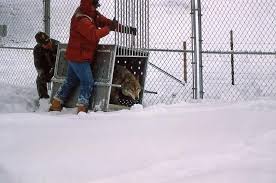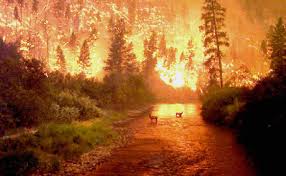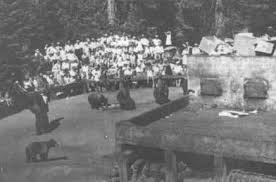Yellowstone and the Park Service Centennial
By: John A. Baden, Ph.D.Posted on January 14, 2016 FREE Insights Topics:
The U. S. Park Service in the Department of Interior celebrates its centennial this year. It manages over 400 national parks and monument units. The creation of these protected areas is often labeled as "America's best idea".* America's first national park, Yellowstone, was established in 1872. It has become the world's model for park management.**
FREE's home is in Greater Yellowstone. This includes the 2,200,000-acre Park and its surrounds, a total of some 18,000,000 acres. We love the area and exercise good stewardship over our portion of it. We host occasional policy salons and seminars at the FREE office on a Gallatin Gateway, Montana ranch just an hour north of the Park.
Protecting America's natural treasures through a system of national parks was an excellent idea and remains an important goal. National parks surely are one of the great achievements of the Progressive Era reform movement. The major flaw in their design was management by governmental agencies rather than independent national trusts. With government ownership and management the development of organized political interests and pressures naturally follow. These forces will be in battle with ecological science. That’s the way the world works.
Our recommendations for park management require utilization of the best scientific knowledge and the insulation of managers from political influence. Starting with these principles we design and advocate constructive alternatives to the command-and-control approach of the Progressive Era.
Special interest constituencies naturally develop within and around parks. They influence policy, sometimes for decades. FREE's "Wisdom of the Elders" project explores and explains how leaders in Yellowstone Park identified and corrected three major problems afflicting the Park's ecology for a century. These were exterminating all wolves, extinguishing all forest and grass fires ASAP, and feeding hotel food scraps to bears. Each of these practices produced large unanticipated problems--and developed strong constituencies within and outside the Park. Correcting these mistakes were monumental accomplishments, ones we celebrate.



Wolf reintroduction in 1995 Fires burning out of control in 1988 Public viewing bears feasting on garbage
Management has continually evolved as scientific understanding has improved. Still, however, management remains hostage to politics. Political economy thinking, specifically Law and Economics and Public Choice theory, have yet to influence Park policy. Understanding these disciplines could help guide coping and reform strategies.
We have run the largely successful and surely valuable National Park System experiment for a century. Yellowstone evolved from management by the U. S. Army from 1886 until 1917. The newly established Park Service took over Yellowstone in 1918. What institutional arrangements might develop as new challenges emerge? Three of the major problems will demand attention. These are declining federal funding as entitlement pressures grow, rapidly increasing visitor numbers with accompanying behavioral problems, and expanding numbers of the once exotic bison.
Science vs Politics
At times the policies demanded by science are denied by politics. This fosters such myths as "natural regulation" of animal populations. Yellowstone experienced this with huge, ecologically unsustainable elk populations in the mid twentieth century. This pathology is being repeated with bison. Until the late 1800s they were rarely encountered in the Park. Now there are nearly 5,000 bison, mainly in the Lamar Valley.
The elk had strong and politically active supporters, especially hunting outfitters in gateway communities in Wyoming and Montana. After a great deal of political controversy, wolves were reintroduced in 1995 and the elk population problem was ameliorated. During the next twenty years, wolves reduced the numbers of elk in the Park by some 80% in some areas and there Park ecology is recovering from over browsing and over grazing.
In general, the scientific management model, control by neutral scientific experts, has been difficult to implement. It's politically naive, for government land is necessarily political land--and politics normally trumps science.
One key to preservation of the values justifying the creation of parks involves insulating them from political pressures. Still, despite the predictable and inexplicable problems, we are indeed fortunate to have our National Park System. Understanding its historical and political economy context helps guide reforms for its preservation.
One major threat is diminishing federal support for the management of parks as entitlement pressures grow. In the political arena, entitlements trump ecology and welfare trumps wilderness. Our next FREE Insight will place such problems in historical, cultural, ecological and economic context.
*The National Parks: America's Best Idea is a 2009 documentary film for television, DVD and companion book (ISBN 978-0307268969) by director/producer Ken Burns and producer/writer Dayton Duncan which features the United States National Park system and traces the system's history.
**For an example of applied ecological science, see Progress Report: Implementation of Pilot Native Vegatation Restoration Efforts in the Gardiner Basin, Yellowstone National Park, 2008-2014

